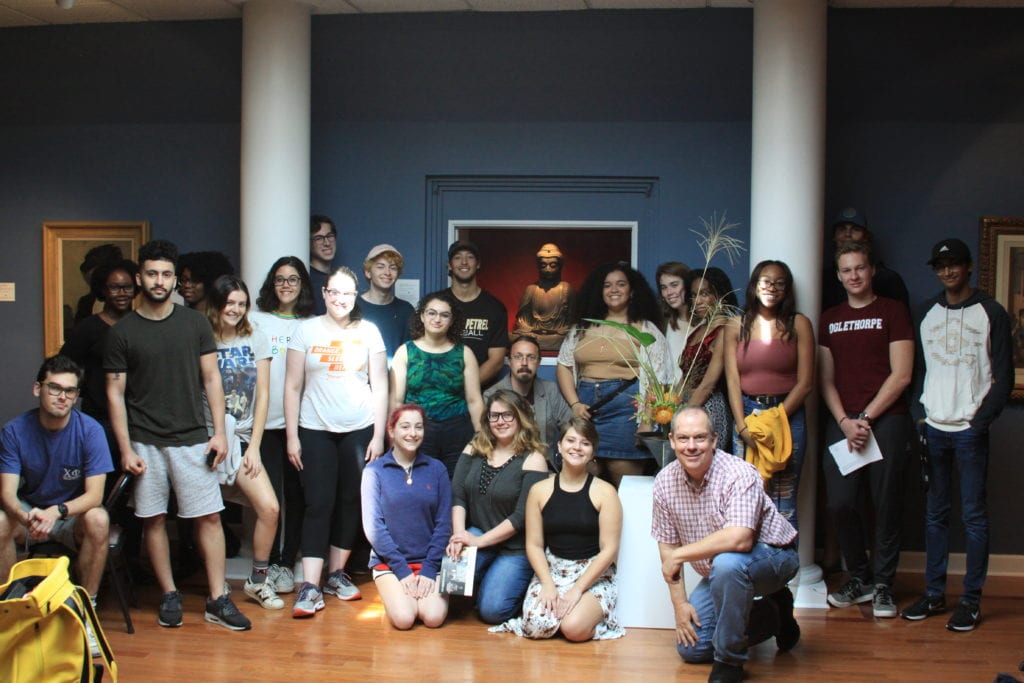The Oglethorpe museum’s newest exhibition, “When East Meets West: Three Centuries of Artistic Discourse,” has given students studying international politics and Asian studies the chance to expand their scope into the arts.
“When I heard this exhibit was coming with its connections between East and West, I definitely thought, ‘I need to make use of how this exhibit within the class’,” said Dr. Stephen Herschler, professor of politics.

Dr. Herschler’s Asian Politics fall 2018 class at the Oglethorpe University Museum of Art.
Dr. Herschler’s Asian Politics course is a mainstay on the fall semester course lineup, and this year he was able to work with OUMA to add an artistic element.
“One of the benefits of having the Oglethorpe museum on campus is the fact that there have been occasions where they have exhibits that pertain to Asian art,” Herschler said. “That affords me an incredible opportunity to take what could be book knowledge or video knowledge and suddenly have access to material objects from these countries.”
OUMA is first and foremost a teaching museum.
“The connection between the Asian Politics course and the exhibition is a part of a new movement on behalf of OUMA to stylize semester-long exhibitions around the curriculum of specific courses,” said John Tilford, curator of collections at OUMA. “Each work relates to at least one, if not more, course offerings. Every January and July, I work with faculty to choose works from OUMA’s permanent collection that will stay up for six months and which all faculty and students will be able to utilize.”
“When East Meets West” aims to illustrate the rich cross-cultural references between Japanese, European, and American artists during the period between the late 17th to late 19th century. Herschler’s course examines a variety of political systems in Asia, with a focus on understanding the factors that determine different political outcomes in nations that share a geographical region and many similar cultural and historical influences.
The class visited the exhibition to study the works of art, including late 17th and early 18th century Japanese porcelain and Japanese woodblock prints from the 18th and 19th centuries. Students also closely studied the works in the exhibition to complete their final project, “adopting” a single piece as a small group, and researching and reporting on its economic significance.
Herschler hopes that his students will walk away from this academic experience with an appreciation for the vast information that can be encoded in artistic objects. And the next time his students visit a museum, he hopes they don’t see the pieces of art as “dead, isolated objects,” but rather as objects that offer a plethora of cultural and economic information.
“I want them to be asking, ‘What is the life history of this object? How does it reflect the culture of the time?'”
“When East Meets West” will be on view through December 9, 2018.
